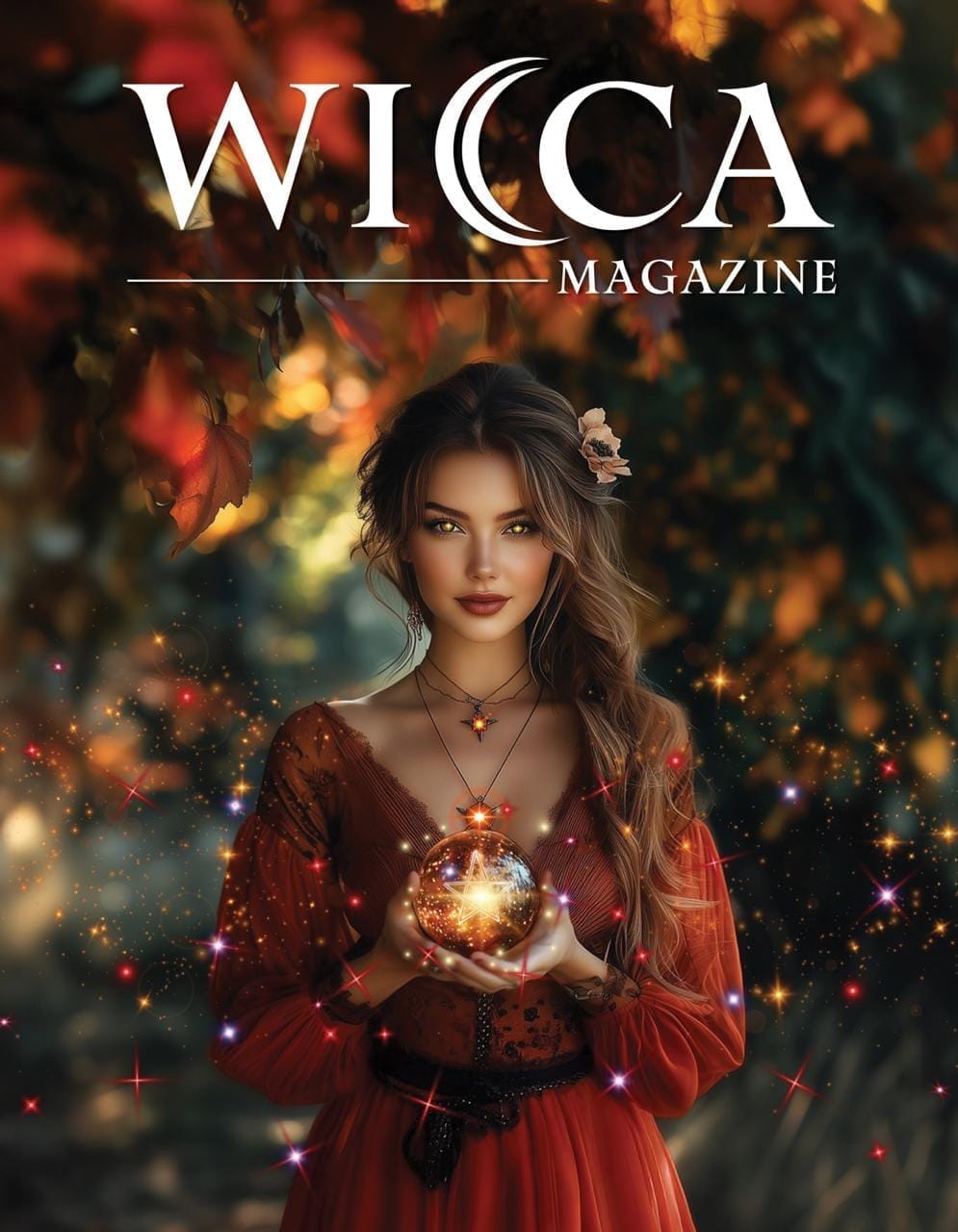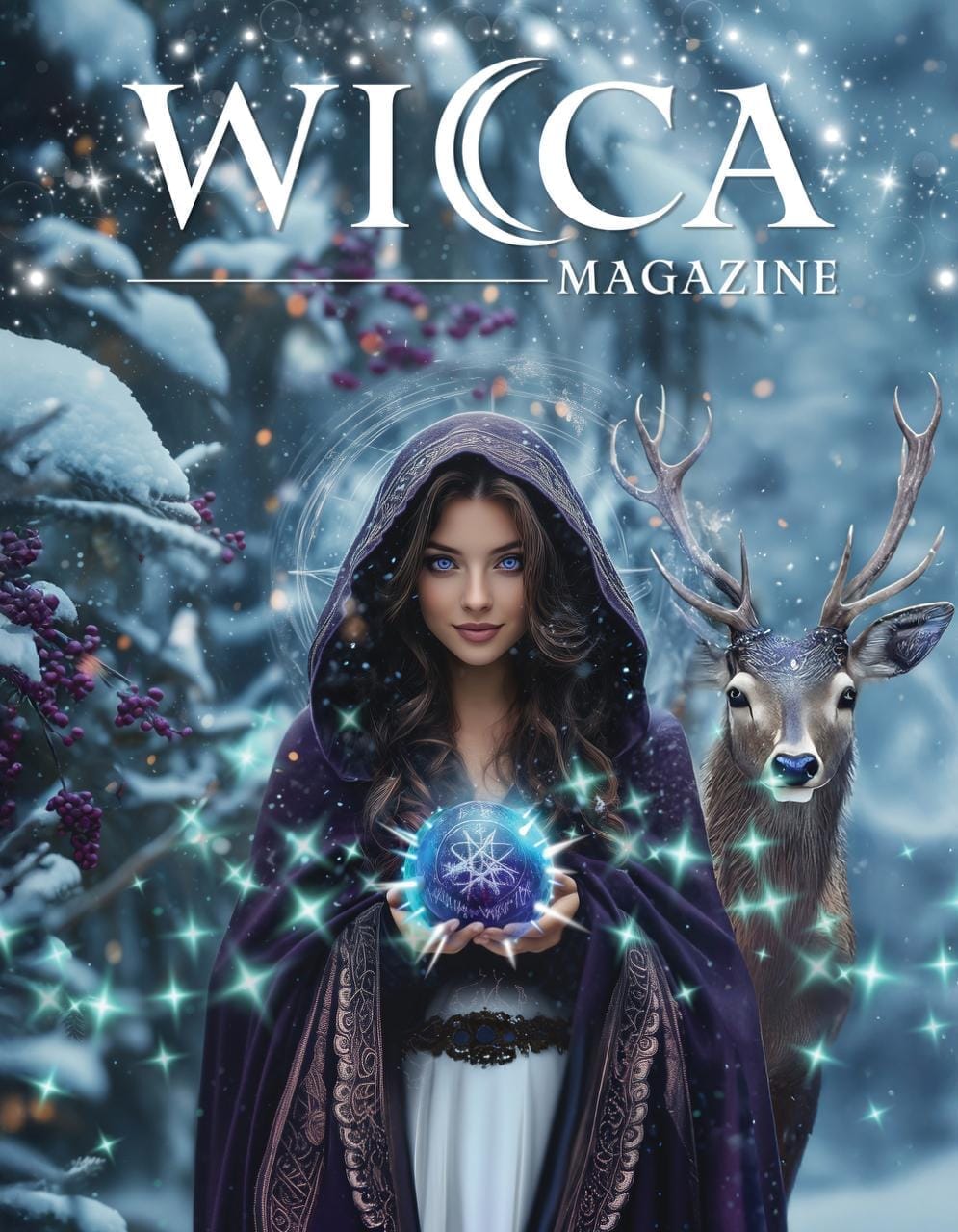


Unlock the Magick of Yule! - Your Wicca Magazine Issue Awaits
Step into the season of light with Wicca Magazine. Each digital issue is a sacred offering of spells, rituals, and Wiccan wisdom — honoring ancient paths and empowering your modern magick. Your craft, your journey, your magickal sanctuary.
Ostara is our name for the spring equinox, a time when the world is in balance. Day and night are the same length in both the northern and southern hemispheres (with the autumnal equinox happening in the southern hemisphere). It is also a time when we view the goddess as being heavily pregnant with the new life that is about to erupt from the earth in spring.
For that reason, if you are focusing on fertility or love this year, Ishtar may be a deity you wish to incorporate into your offerings, invocations, and honors. Ostara is a great time to bring balance to a relationship that has felt rocky, for example.
Name and Depictions
Originally worshipped by the Sumerians as Inanna, Ishtar is the goddess of love, fertility, and war. She was worshipped by the Akkadians, Babylonians, and Assyrians as Ishtar and is also known as a goddess of divine justice, political power, sex, and beauty. She is depicted as young and beautiful, as she is also known as the Queen of Heaven. She is often depicted riding a lion as a mount. She is almost always portrayed in fully human form.
Role in Mesopotamian Pantheon
While there are many ancient sources showcasing the importance and prevalence of Ishtar, they are incomplete. Most are fragmented and therefore missing context. However, two famous stories from Mesopotamia feature Ishtar and give us some clues to her personality, role in the pantheon, and importance to the people. As both Inanna and Ishtar, the goddess appears in a great deal of other ancient works. From myths and spells to hymns and proverbs, Ishtar’s presence can be felt. Enheduanna, a priestess of the moon god who lived around 2300 BCE and is the first individually identified author, wrote some of the earliest poems dedicated to Inanna.
Ishtar appears in the Epic of Gilgamesh. One of the earliest known epics, the Epic of Gilgamesh tells the story of the eponymous hero and his travels. In Tablet VI of the Standard Babylonian version, the semi-divine King of Uruk, Gilgamesh, is cleansing himself and his weapons after an earlier battle with Humbaba, the Forest Guardian. Ishtar comes upon him and, upon seeing how beautiful he is, proposes marriage. She lays out all the benefits that would come from being her groom. Gilgamesh not only rejects Ishtar but does so harshly and dismissively. After his rude refusal, where he makes unflattering comparisons to the goddess, Ishtar travels to visit Anu, the sky deity, in heaven. Angry and distraught at the cruel rejection of Gilgamesh, Ishtar convinces Anu to let her take the Bull of Heaven to get vengeance on Gilgamesh. Gilgamesh and his companion kill the beast (likely an incarnation of the constellation Taurus). Ishtar and the women of the city mourn over the Bull’s body after its death at the hands of
Gilgamesh.
Ishtar and her husband Tammuz—in their Sumerian forms of Inanna and Dumuzi—have a loving, close relationship in most surviving Sumerian poetry. However, one of the most famous surviving works from Mesopotamia shows that their love did not end well. In a bid for more power, Ishtar traveled to the underworld—the domain of her sister. She had to travel through seven gates, shedding an item of clothing at each one. When she passes the last gate and stands naked before her sister, she is killed. Fearing the repercussions if the goddess of love remains trapped in the underworld, Ishtar’s companion and the god of wisdom work together to revive and free her. Her place in the underworld cannot remain empty, however, so Tammuz is sent in her place.
Symbols and Associations
Ishtar is associated with the planet Venus (and is considered a counterpart to the Roman goddess Venus). Lions are a common symbol of Ishtar, as is the 8-pointed star. The 8-pointed star was a representation of the planet Venus, which is why it was associated with Ishtar. The symbol used to depict Ishtar (her cuneiform ideogram) was a hook-shaped knot of reeds. This represented the doorpost of the storehouse, another of Ishtar’s associations. Storehouses were a symbol of fertility and abundance. Doves are another of Ishtar’s symbols, and there is evidence to suggest that in some myths, she would take the form of a dove.
Modern Practice
Though we don’t have many complete records of Ishtar, we have enough to know her associations, her magickal domains, and her temperament. This can help you as you bring Ishtar into your modern practice.
Working with Ishtar when Venus is ruling will strengthen her powers and may make communication easier or provide more immediate results. The 8-pointed star is an important symbol of Ishtar and Venus. If you can create or find an art piece or jewelry piece of the 8-pointed star, you’ll have a powerful conductor for her energy and power.
Doves and lions are symbols of Ishtar, and their likenesses can serve as a representation of Ishtar on your altar.
Though usually invoked for her powers related to love, fertility, and sex, don’t forget that Ishtar also had domain over divine justice and political power. You can call on her for needs in those areas as well.
With the storehouse also being a symbol, you can call upon Ishtar when seeking abundance and plenty.
Seek out her stories, the poems written in dedication to her, and use those to build your connection and communication with her. Write your own poems in honor of her as an offering.
There are many ways to use Ishtar in your modern practice of the Craft. Like most other aspects of being a Witch, it will be personal to you, and no two witches will invoke her the same way.